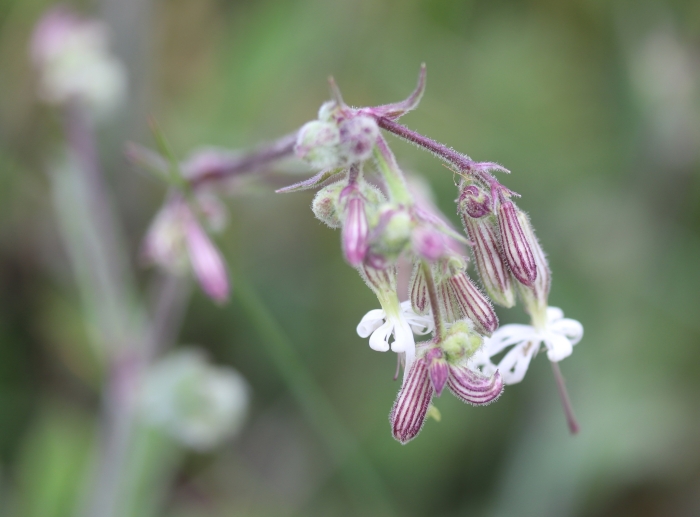Nottingham Catchfly
(Silene nutans)
Nottingham Catchfly (Silene nutans)
/
/

Michel Langeveld
CC BY 4.0
Image By:
Michel Langeveld
Recorded By:
Copyright:
CC BY 4.0
Copyright Notice:
Photo by: Michel Langeveld | License Type: CC BY 4.0 | License URL: http://creativecommons.org/licenses/by/4.0/ | Rights Holder: Michel Langeveld | Publisher: iNaturalist | Date Created: 2021-06-26T12:07:59-07:00 |





















Estimated Native Range
Summary
Silene nutans, commonly known as Nottingham catchfly, is a perennial herb native to a variety of habitats across Europe and parts of Asia, including open grasslands, meadows, rocky outcrops, and cliff sides. It typically grows up to 31 inches tall and features a basal rosette of spathulate (spoon-shaped) lower leaves and lanceolate (lance-shaped) upper leaves. Nottingham catchfly produces white or pinkish flowers that open at night, a characteristic that has evolved to specifically attract nocturnal moth pollinators. The flowers are highly fragrant, emitting a sweet scent with notes of benzyl acetate and benzaldehyde, which further aids in attracting its pollinators.
Nottingham catchfly is appreciated for its night-blooming flowers and pleasant fragrance, making it a unique addition to moon gardens where evening aesthetics are valued. It is also used in wildflower meadows and naturalistic plantings to support biodiversity. This plant prefers well-drained soils and can tolerate a range of conditions from full sun to partial shade. While it is not commonly afflicted by diseases, it can be susceptible to root rot in overly wet conditions. Nottingham catchfly is an important host for the leaf-mining moth Coleophora galbulipennella, contributing to the ecological interactions within its habitat.CC BY-SA 4.0
Nottingham catchfly is appreciated for its night-blooming flowers and pleasant fragrance, making it a unique addition to moon gardens where evening aesthetics are valued. It is also used in wildflower meadows and naturalistic plantings to support biodiversity. This plant prefers well-drained soils and can tolerate a range of conditions from full sun to partial shade. While it is not commonly afflicted by diseases, it can be susceptible to root rot in overly wet conditions. Nottingham catchfly is an important host for the leaf-mining moth Coleophora galbulipennella, contributing to the ecological interactions within its habitat.CC BY-SA 4.0
Plant Description
- Plant Type: Herb
- Height: 1.5-2 feet
- Width: 1-1.25 feet
- Growth Rate: Moderate
- Flower Color: Cream, Pink
- Flowering Season: Summer
- Leaf Retention: Deciduous
Growth Requirements
- Sun: Full Sun
- Water: Medium
- Drainage: Medium
Common Uses
Border Plant, Butterfly Garden, Low Maintenance, Rock Garden
Natural Habitat
Native to open grasslands, meadows, rocky outcrops, and cliff sides across Europe and parts of Asia
Other Names
Common Names: Nottingham Catchfly, Nodding Catchfly
Scientific Names: , Silene nutans, Silene italica, Silene spathulata, Silene spathulata, Silene spergulifolia, Silene spergulifolia,
GBIF Accepted Name: